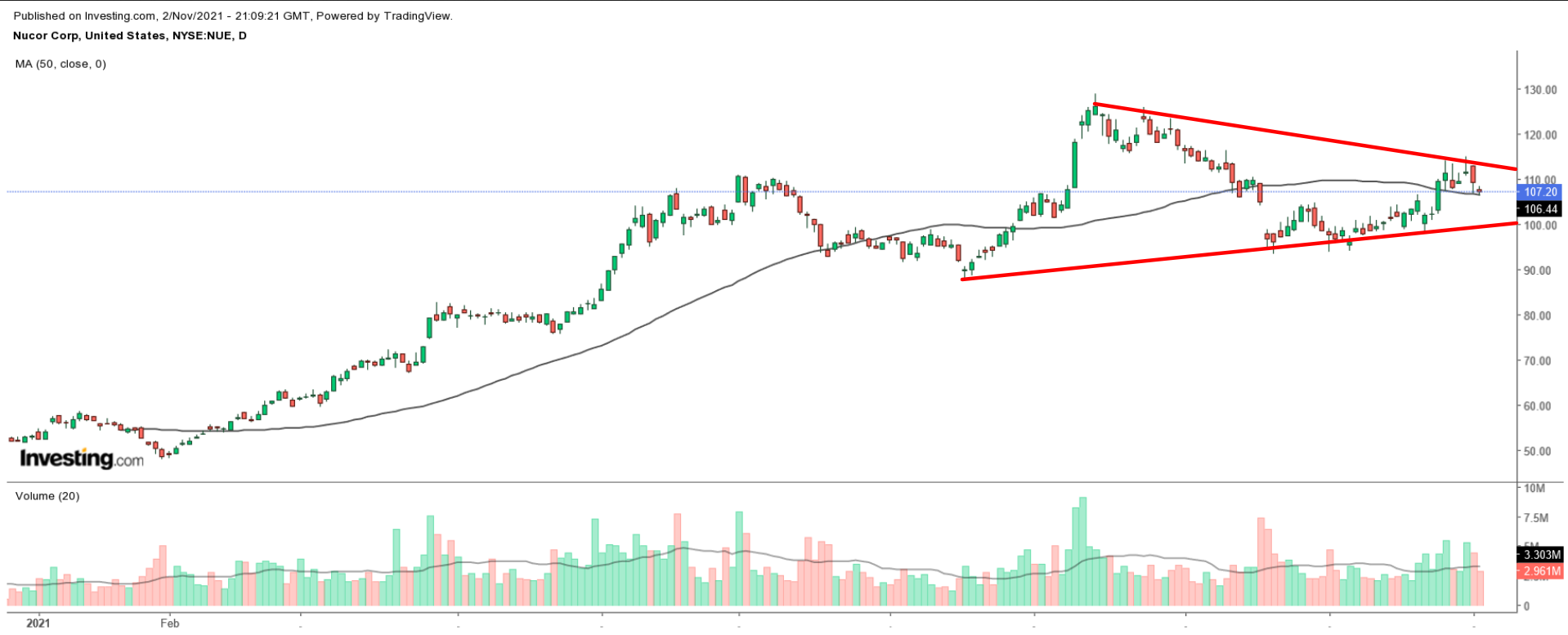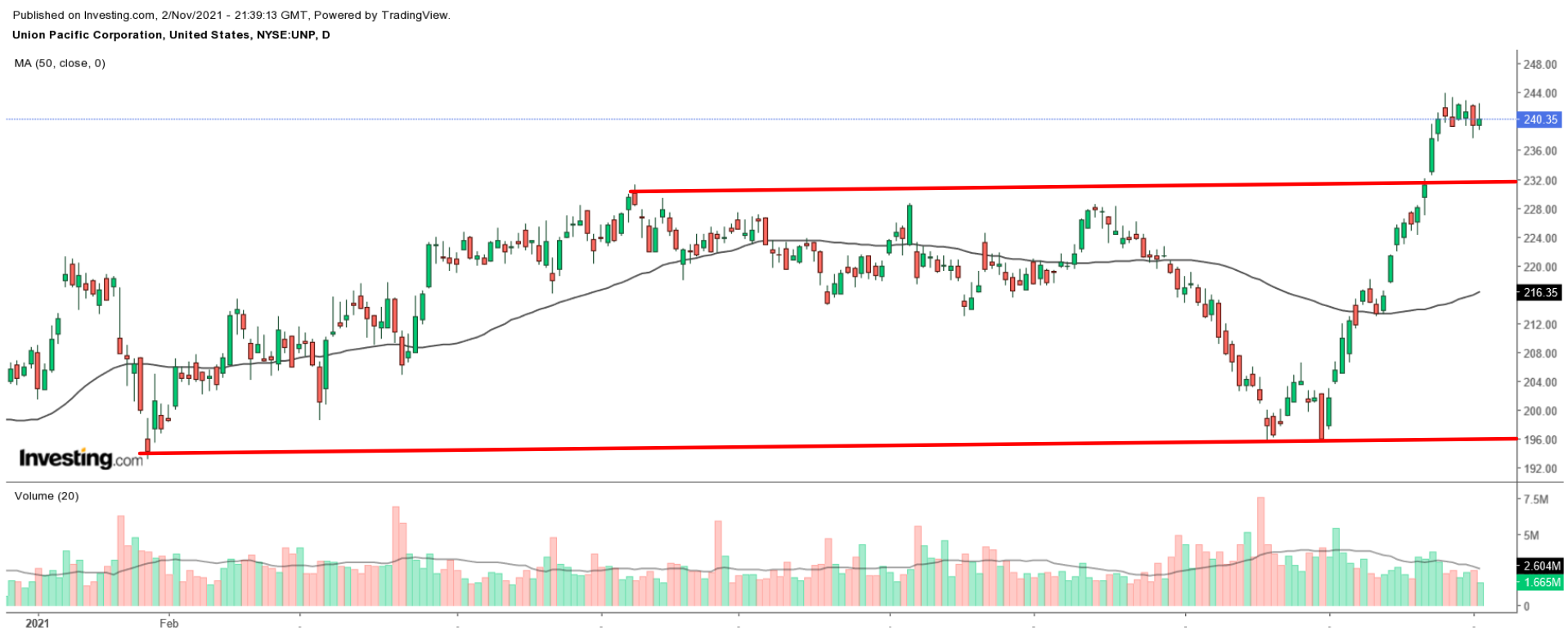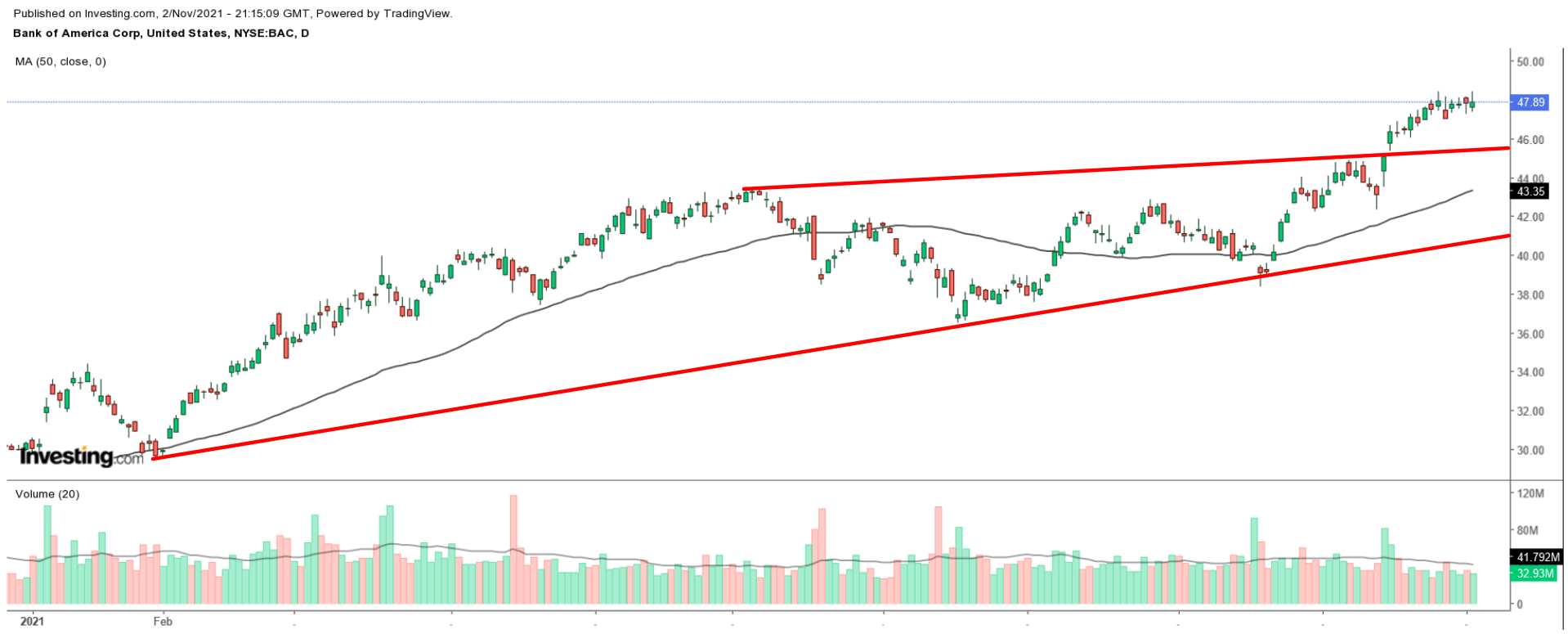The Federal Reserve is widely expected to announce the tapering of its $120 billion-per-month bond-buying program at the end of its policy meeting today. The U.S. central bank is set to trim its purchases of Treasury and mortgage-backed securities by $15 billion a month starting in either November or December, before ending them completely by the middle of 2022.
When the Fed last slowed its pace of bond buying in May 2013, the best-performing sectors in the following months were materials and industrials. Financials also stand to gain amid the expected repositioning in the Treasury market.
Taking that into consideration, below we highlight three proven year-to-date winners that are primed for more gains as the Fed begins its bond-buying taper.
1. Nucor
- Year-To-Date Performance: +101.6%
- Market Cap: $31.2 Billion
Nucor (NYSE:NUE) shares—which have more than doubled since the start of 2021 due to a potent combination of surging steel prices and booming demand for steel products—look poised for further appreciation in the months ahead, even with a less dovish Fed.
As the largest steel producer in the United States, Nucor stands to benefit from the expected boom in construction resulting from President Joe Biden’s infrastructure spending package. The plan, which is expected to deliver $550 billion of new federal investments in the country’s infrastructure, includes proposals to repair and improve the nation’s deteriorated roads, highways, bridges, and airports.
That could result in more positive action for Nucor, which owns and operates 23 scrap-based steel production mills across the country.

NUE stock—which has gained 101.6% year-to-date—ended at $107.22 on Tuesday, earning the Charlotte, North Carolina-based steel products company a valuation of $31.2 billion.
Nucor reported impressive third quarter results on Oct. 21, easily topping expectations for both earnings and revenue thanks to a favorable demand environment. In a sign that bodes well for the future, Nucor’s management sounded upbeat regarding its outlook for the current quarter and beyond, saying it expects demand to remain robust across most end-use markets well into 2022.
Honorable mentions: Vulcan Materials (NYSE:VMC), Martin Marietta Materials (NYSE:MLM), Cleveland-Cliffs (NYSE:CLF)
2. Union Pacific
- Year-To-Date Performance: +15.5%
- Market Cap: $154.5 Billion
The second largest freight railroad company in the United States, Union Pacific (NYSE:UNP) has seen its shares gain steam in recent weeks thanks to an improving demand outlook as economic activity picks up. UNP stock—which is up about 15% year-to-date—closed at $240.44 yesterday, not far from its recent record of $243.91 touched on Oct. 26.
At current levels, the Omaha, Nebraska-based railroad giant, which operates 8,300 locomotives over 32,300 route miles across 23 states, has a market cap of $154.5 billion.

The rail company focuses primarily on transporting freight commodities, such as coal, grains, lumber, crude oil, and ethanol. It also offers transportation services for construction products, industrial chemicals, fertilizers, plastics, and metals. As such, UNP stands to benefit from the continued recovery in industrial activity in the months ahead even as the Fed withdraws some of its stimulus.
Union Pacific reported better-than-expected profit and revenue when it released third quarter financial results on Oct. 21, benefitting from surging industrial shipments amid an improving economy. The freight-hauling railway company is also a quality dividend stock. UNP currently offers a quarterly dividend of $1.07 per share, which implies an annualized dividend of $4.28 per share, at a yield of 1.77%.
Honorable mentions: CSX (NASDAQ:CSX), Rockwell Automation (NYSE:ROK), Old Dominion Freight Line (NASDAQ:ODFL)
3. Bank Of America
- Year-To-Date Performance: +58%
- Market Cap: $391.8 Billion
Bank of America (NYSE:BAC) has thrived this year, reaping the benefits of a recovering economy, robust investment banking activity and narrowing credit loss exposure. The Charlotte, North Carolina-based banking giant—which services approximately 11% of all American bank deposits—has seen its shares climb 58% year-to-date, far outpacing the comparable returns of both the Dow Jones Industrial Average and the S&P 500.
Given the expected increase in rates across the Treasury market resulting from the Fed’s anticipated formal tapering announcement, BAC stock still looks like a solid investment going forward. Higher rates and yields tend to boost the return on interest that banks earn from their loan products, or net interest margin—the difference between the interest income generated by banks and the amount of interest paid out to their depositors.

BAC stock, which has outperformed industry peers such as JPMorgan Chase (NYSE:JPM), and Citigroup (NYSE:C), ended at $47.88 on Tuesday, not far from its best level since October 2007. At current valuations, BofA has a market cap of about $392 billion, making it the second biggest U.S. banking institution, behind JPM.
The firm delivered third quarter earnings and revenue which blew past analyst estimates when it reported financial results on Oct. 14, driven by record asset management fees and a strong performance across its investment banking unit.
Honorable mentions: Wells Fargo (NYSE:WFC), Capital One Financial (NYSE:COF), First Bancorp (NASDAQ:FBNC)
